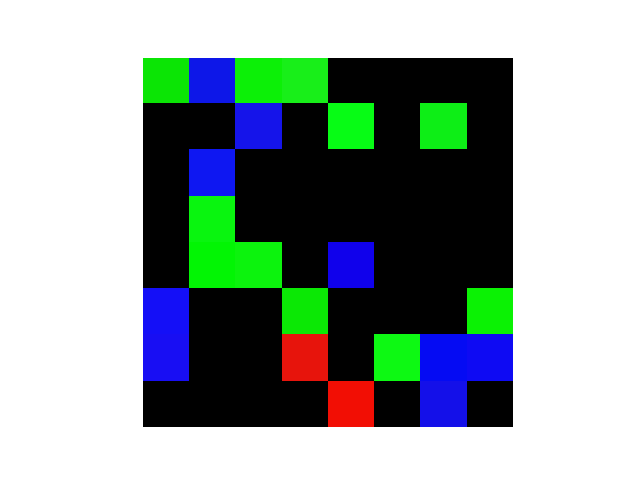
teex#
A Python Toolbox for the evaluation of machine learning explanations.
This project aims to provide a simple way of evaluating individual black box explanations. Moreover, it contains a collection of easy-to-access datasets with available ground truth explanations.
Visit our GitHub for source.
1. Usage overview#
teex is divided into subpackages, one for each explanation type. Each subpackage contains two modules, focused on two
distinct functionalities:
eval: contains evaluation methods for that particular explanation type. For every subpackage, there is one high-level function to easily compute all the available metrics for an arbitrary number of explanations.data: contains data classes with available g.t. explanations of that particular explanation type, both synthetic and real. All of them are objects that need to be instanced and, when sliced, will return the data, the target and the ground truth explanations, respectively.
1.1. Evaluation (with feature importance as an example)#
What are feature importance vectors? They are vectors with one entry per feature. Each entry contains a weight that represents a feature’s importance for the observation’s outcome. Weights are usually in the range \([-1, 1]\).
Suppose that we have a dataset with available g.t. explanations (gtExps) and a model trained with it (model):
from teex.featureImportance.eval import feature_importance_scores
# get individual feature importance explanations with any method
predictedExps = get_explanations(model, X)
# evaluate predicted explanations against ground truths
feature_importance_scores(gtExps, predictedExps, metrics=['fscore', 'cs', 'auc'])
This basic syntax is followed by the main evaluation APIs of all 4 explanation types:
Feature Importance:
feature_importance_scoresSaliency Maps:
saliency_map_scoresDecision Rules:
rule_scoresWord Importance:
word_importance_scores
Other functionalities are included in each evaluation module.
1.2. Metrics supported#
Metrics available as of v1.0.0 are
Feature Importance
Cosine Similarity: similarity between the two vectors is measured in an inner product space in terms of orientation.
ROC AUC: where the ground truth is binarized in order for it to represent a class and the predicted vector entries are interpreted as classification scores or likelihood.
F1 Score: where both ground truth and prediction are binarized according to a user-defined threshold.
Precision: g.t. and prediction treated as in F1 Score
Recall: g.t. and prediction treated as in F1 Score
Saliency Maps
Same metrics as in feature importance. Each pixel in an image is considered to be a feature.
Decision Rules
Complete Rule Quality: Proportion of lower and upper bounds in a rule explanation whose that are \(\epsilon\)-close to the respective lower and upper bounds (same feature) in the ground truth rule explanation amongst those that are not infinity.
All metrics in feature importance, where a transformation of the rule into feature importance vectors is performed first. See doc. for details.
Word Importance:
All metrics in feature importance, where a vocabulary is considered the feature space and a word importance explanation may or may not contain words from the vocabulary.
Note how in teex, feature importance vectors are a universal representation: we ‘translate’ all other explanation types to feature importance vectors to allow a wider metric space.
1.3. Datasets#
teex also provides an easy way to get and use data with available ground truth explanations. It contains real datasets and can generate synthetic ones. All of them are instanced as objects, and can be sliced as usual. For example:
from teex.saliencyMap.data import Kahikatea
X, y, exps = Kahikatea()[:]
downloads and assigns data from the Kahikatea dataset:


Fig. 1 A Kahikatea dataset sample.
Other datasets, such as CUB-200-2011 and the Oxford-IIIT Pet Dataset, are available on teex, with over 19000 images and 230 distinct classes combined:
from teex.saliencyMap.data import CUB200
X, y, exps = CUB200()[:]


Fig. 2 A CUB-200-2011 dataset sample.
from teex.saliencyMap.data import OxfordIIIT
X, y, exps = OxfordIIIT()[:]


Fig. 3 An Oxford-IIIT Pet Dataset sample.
Synthetic datasets can also be easily generated:
from teex.saliencyMap.data import SenecaSM
X, y, exps = SenecaSM()[:]


Fig. 4 Artificial image and its g.t. saliency map explanation.
Datasets for all other explanation types are available too.
2. Examples#
Here you will find hands-on examples of teex. For each explanation type, explanation evaluation and data generation are showcased.
Advanced examples and experiments can also be found within the saliency map and model selection sections.